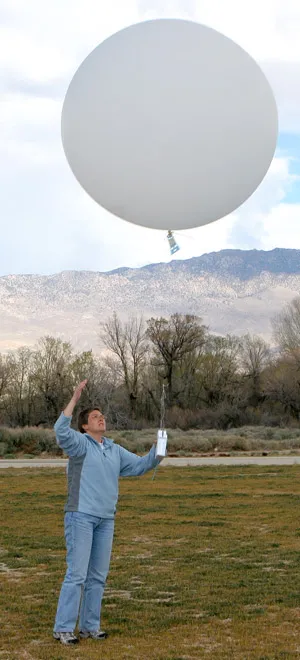Exploring the Atmosphere with Weather Balloons

A scientist launches a weather balloon carrying instruments to measure temperature, pressure, humidity, and wind.
UCAR
Every 12 hours, hundreds of people in places around the world release huge, white balloons into the sky. The balloons float upward, each tethered to a box of instruments that collects data about the atmosphere.
These are weather balloons. The boxes of instruments are called sondes. The data that sondes collect is used in models to improve weather forecasts.
In addition to the hundreds of balloons launched every 12 hours, weather balloons are used in many research projects to examine aspects of the atmosphere that are difficult to access. For example, using weather balloons a French meteorologist named Léon Teisserenc de Bort was able to find the top of the troposphere and the stratosphere beyond. Starting in 1896, he lauched hundreds of balloons that provided the data for his discovery.
In two hours, a weather balloon can rise above the clouds, higher than the paths of jet planes, passing through the ozone layer in the stratosphere. Reaching altitudes of 35 km (22 miles) or higher, the balloons endure temperatures as cold as -90° C (-130° F). Depending on winds, a balloon can drift more than 200 km (125 miles) from the place it was released.
The higher the balloon travels, the more it expands - from 2 meters (6.5 ft) to up to 8 meters (26 ft) across - because air pressure decreases as the balloon climbs higher in the atmosphere. Eventually the balloon bursts. The latex or neoprene balloon is flexible and can expand a lot, but eventually it breaks - usually when the balloon reaches an altitude where air pressure is only small fraction (a few thousandths) of what is found at Earth's surface.
Rising about four meters per second, and taking two measurements of the atmosphere each second, it’s possible for a balloon to collect data about every two meters through the sky. The sonde instruments measure temperature, air pressure, humidity, wind speed and wind direction. A radio signal sends these data back to scientists on the ground.
© 2014 UCAR